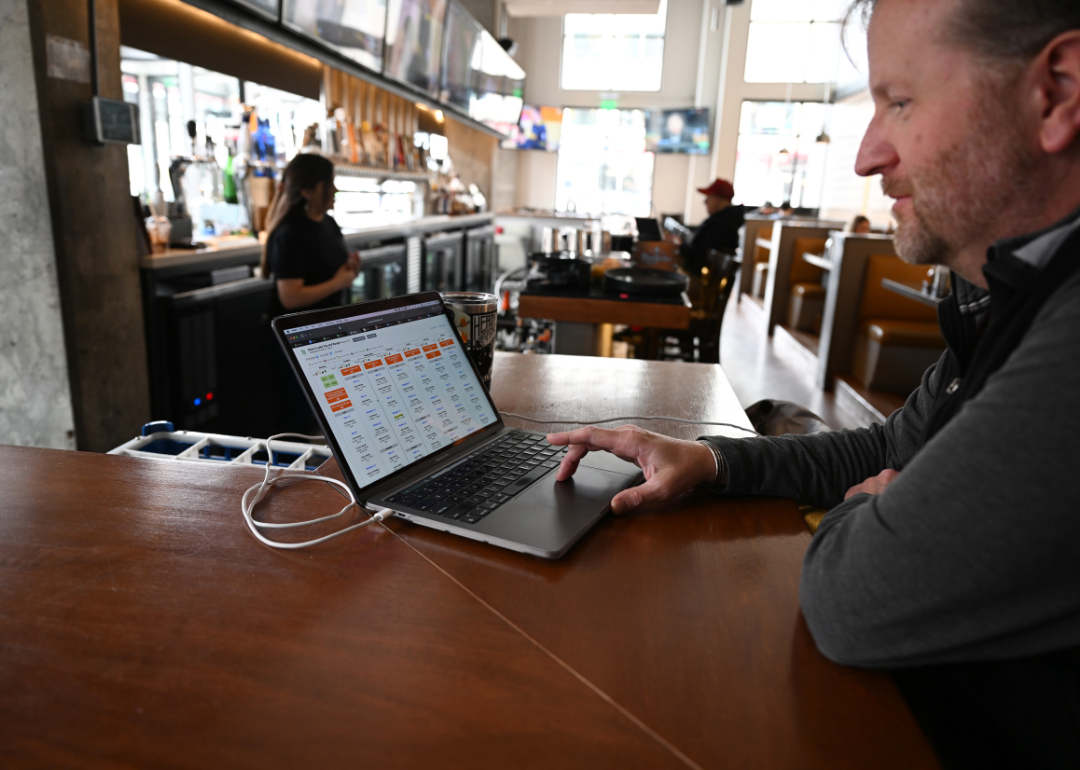
How small businesses are responding to financial challenges
This story originally appeared on Credibly and was produced and distributed in partnership with Stacker Studio.
How small businesses are responding to financial challenges
Even as the COVID-19 pandemic receded in 2022, a cocktail of tricky economic conditions created a tough market for small businesses. This particular year saw some of the highest and most sustained inflation on record—peaking at 9.1% in June 2022—affecting consumers and businesses alike. Interest rate hikes, crypto crashes, and the global economic impact of Russia's invasion of Ukraine only added to the challenging conditions.
Small business owners had no choice but to adapt in order to weather the storm. To find out how they're coping, Credibly used the 2022 Small Business Credit Survey from the Federal Reserve to discover the top actions small businesses are taking in response to financial challenges. The analysis does not include businesses with no employees.
The Federal Reserve survey collected responses from over 7,000 businesses on actions they took over the course of 2022. According to the responses, just 6% of employer firms said they didn't face any financial challenges over the past year. Of the majority that did face financial challenges, about 95% took some type of action to mitigate them.
Keep reading to learn more about the top steps small businesses took to respond to these challenging economic conditions.

#7. Obtained grants/gifts
- About 18% of small businesses employers with financial challenges took this action
The least popular way small businesses dealt with recent economic challenges was by obtaining grants or gifts. While some agencies like the Small Business Administration, the Department of Commerce's Minority Business Development Agency, and other federal agencies offer grants for small businesses, they're typically targeted at specific industries or types of companies. Some state and local agencies also provide grants, though the amount available to small businesses varies from region to region.
Additionally, many pandemic-era funding programs ended in 2022, removing another financing option for business owners. Past years of the Federal Reserve survey found greater numbers of small businesses sought out pandemic-related assistance—91% and 77% in 2020 and 2021, respectively. However, that need did decrease in 2022 as the pandemic gradually receded, with only 34% of firms applying for pandemic-related financial assistance, according to the survey results.

#6. Made a late payment or didn't pay
- About 23% of small businesses employers with financial challenges took this action
According to one survey, 59% of small businesses say they've been on the receiving end of late payments. This in turn can make it difficult for the business to pay its own bills on time—or at all. In fact, as many as a third of small businesses in the U.S. said they're at risk of closure due to late payments. The consequences can be equally dire for missing a payment or making a late payment on a business loan. Not only will they likely start accruing late fees, but the loan could enter into default—possibly triggering a clause that requires the borrower to pay back the entirety of the loan. This could lead to a seizure of business assets and even the owner's personal assets, as well as hurting their credit score.

#5. Cut staff, hours, and/or downsized operations
- About 32% of small businesses employers with financial challenges took this action
Both revenue growth and employment growth at small businesses remained below pre-pandemic levels in the Federal Reserve survey. Hiring and retaining qualified staff was the top operational challenge reported by small businesses in 2022, with 60% of respondents saying it was an issue.
Small businesses aren't the only ones forced to conduct layoffs or reduce employees' hours, either. A long list of large corporations—including Goldman Sachs, Amazon, and Netflix—laid off thousands of workers in 2022. Despite such widespread layoffs, experts say the labor market is still functioning in workers' favor—potentially complicating matters for small businesses when they are ready to staff up again.

#4. Obtained loans
- About 42% of small businesses employers with financial challenges took this action
Finding new sources of credit remains a popular option among small business owners. In fact, according to the Federal Reserve survey, 51% received a loan from a financial institution or lender over the past five years. The most popular program among small businesses in 2022 was the Small Business Administration's Economic Injury Disaster Loan program, with 23% of firms applying for a loan through that program.
As pandemic-era loan options declined, the share of small businesses applying for a traditional loan, line of credit, or cash advance increased from 25% in 2021 to 40% in 2022. The top reason cited was meeting operating expenses. Additionally, the share of small businesses with high amounts of debt is higher in 2022 than it was before the pandemic began in 2019.

#2. Used cash reserves (tie)
- About 53% of small businesses employers with financial challenges took this action
Many small businesses that had cash on hand took advantage of those reserves to offset broader financial challenges. Still, not all small businesses have that luxury. A 2021 Goldman Sachs survey found that 44% of small businesses had less than three months of cash reserves. Most experts recommend businesses keep between three and six months of operating expenses on hand to ensure they can make it through an emergency. The average length of time a business can survive without bringing in additional money varies widely by industry, from 16 days for restaurants to 47 days for real estate businesses.

#2. Used personal funds (tie)
- About 53% of small businesses employers with financial challenges took this action
Dipping into their personal coffers was a key way small businesses kept going through tough economic times in 2022. That's nothing new: 66% of survey respondents had used the owner's personal savings or funding from friends or family in the past five years. Additionally, 78% of small businesses are self-funded at launch, according to the Chamber of Commerce.
The average cost of starting a small business is $40,000 in the first year, according to Shopify research. Younger small businesses with lower revenue were more likely to rely on personal funds than their counterparts, as were firms owned by women or people of color. Reliance on personal funding increased from 56% in 2019 to 66% in 2022.

#1. Increased prices
- About 56% of small businesses employers with financial challenges took this action
In a year marked by persistent inflation, it's no surprise that small businesses would pass price increases onto their customers in order to cope with the rising cost of materials. The consumer price index for all items rose 6.5% from December 2021 to December 2022, according to the Bureau of Labor Statistics.
Business owners particularly felt the squeeze from increased shipping and freight costs, which can be linked at least in part to the skyrocketing cost of fuel. While raising prices allowed small businesses to recoup some of that cost, higher price tags have consequences of their own. According to a Goldman Sachs survey, 38% of small businesses that raised prices saw a reduction in consumer demand.
Data reporting by Paxtyn Merten. Story editing by Jeff Inglis. Copy editing by Tim Bruns. Photo selection by Abigail Renaud.



